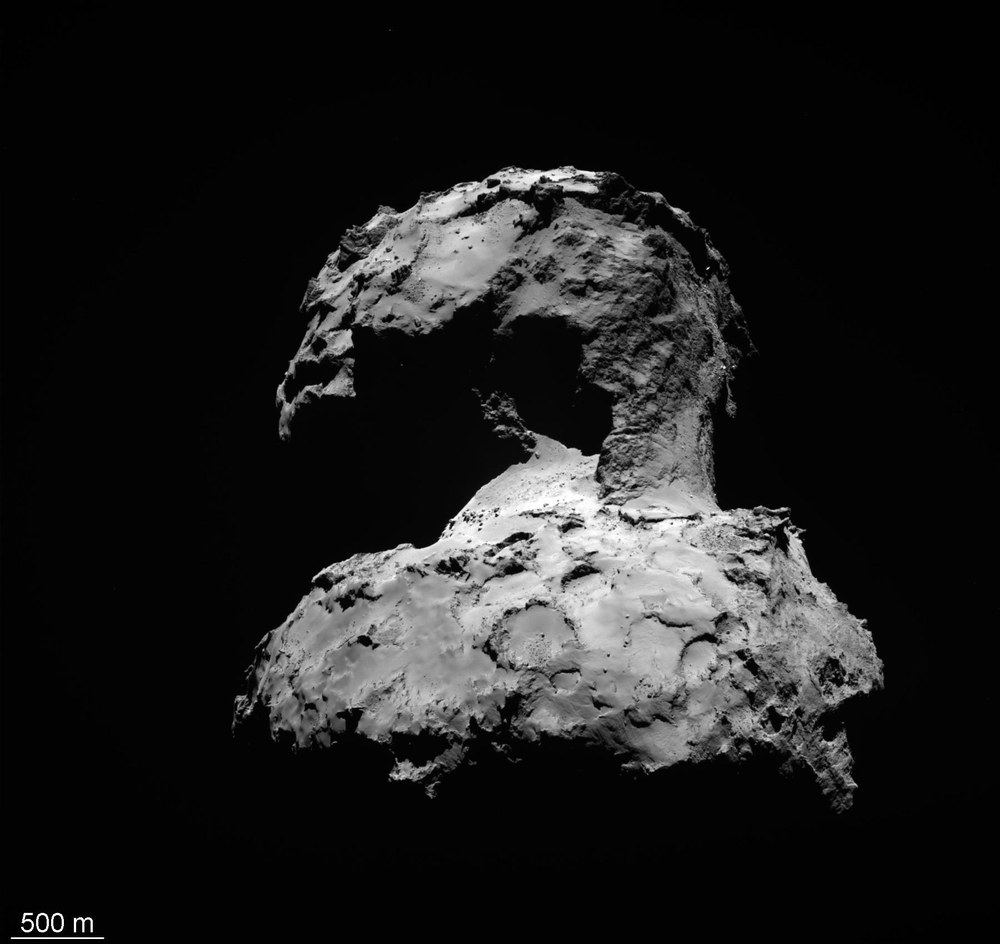Breaking ground in space research


ESA/Rosetta/MPS for OSIRIS Team MPS/UPD/LAM/IAA/SSO/INTA/UPM/DASP/IDA.

Few things could be more fascinating or demanding in the history of European space travel than the Rosetta comet mission. Launched on 2 March 2004, the spacecraft set off on its 10-year journey to the comet 67P/Churyumov-Gerasimenko. Along the way, Rosetta has been performing a series of complex flight manoeuvres (passing Earth three times and Mars once), soaking up the 'momentum' it needed for its long journey. It also inspected asteroids Steins (September 2008) and Lutetia (July 2010) at close quarters, acquiring images while making extensive physical measurements.
The craft was switched to standby mode in July 2011 to complete the arduous journey to the comet. The reason for this was that the spacecraft's trajectory took it beyond Jupiter's orbit, a faraway spot almost 800 million kilometres from the Sun, where the solar arrays would have been unable to generate sufficient electricity for important functions. The craft 'woke up' again on 20 January 2014. At this time, Rosetta was 9 million kilometres from 67P/Churyumov-Gerasimenko, drawing ever nearer to it at a speed of 800 metres per second.
Piggybacking with a comet
Rosetta entered orbit around the comet in May 2014, where it conducted measurements and mapped the comet core in the greatest possible detail whilst searching for a suitable landing site. The lander, Philae, separated from its parent craft on 12 November 2014. Upon its first contact with the comet’s surface, Philae bounced because the harpoons intended to anchor it as it touched down failed to deploy. Philae landed a total of three times, finally coming to rest on the surface at 18:32 CET and immediately starting to conduct measurements. He entered sleep mode at 01:36 CET on 15 November 2014. The two spacecraft will now accompany the comet on its month-long journey to the point at which it is closest to the Sun.
On 13 June 2015 at 22:28 CEST, the Philae lander awoke from hibernation and sent data back to Earth. The contact lasted 85 seconds. During this time, Philae sent more than 300 data packets. Several additional contacts have been made with the lander, the last one was on 9 July 2015.
Both the lander on the comet's surface and the Rosetta spacecraft accompanied the comet on its way to perihelion (closest point to the Sun in its orbit), which they reached on 13 August 2015. Eleven instruments on board the Rosetta orbiter and 10 on the Philae lander will analyse the composition of the cometary nucleus and examine its awakening process.
The questions of whether the comet's surface is indeed in a kind of 'primordial state' and whether these bodies did bring prebiotic molecules and water to Earth, thereby playing a role in the emergence of life as we know it, are among those that the Rosetta mission is seeking to answer. Philae was developed and constructed by an international consortium under the leadership of the German Aerospace Center (DLR).
Video

Video: Chasing a Comet – The Rosetta Mission
Your consent to the storage of data ('cookies') is required for the playback of this video on Quickchannel.com. You can view and change your current data storage settings at any time under privacy.
